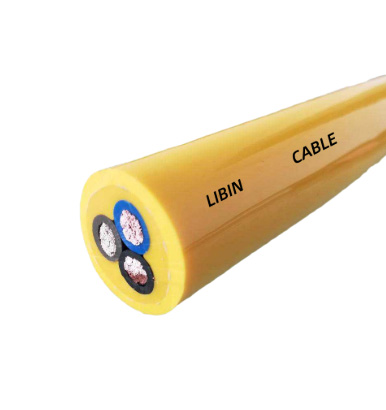Flexible Power Reel Cables are essential tools for managing electrical connections in industrial, commercial, and household applications. They combine flexibility, durability, and convenience, allowing users to deploy and retract cables efficiently while minimizing tangling, wear, and workplace hazards. This guide provides a detailed overview of flexible power reel cables, covering performance features, maintenance methods, product uses, and recommended care schedules, making it a valuable reference for buyers seeking high-quality and reliable cable management solutions.
Flexible power reel cables are designed to meet high standards of safety, reliability, and operational efficiency. Key performance features include:
Constructed from high-quality conductive materials such as copper or tinned copper.
Flexible insulation materials like PVC, rubber, or thermoplastic allow easy bending and rolling.
Reduces stress on internal conductors and extends cable life.
Rated for various voltage ranges, typically from 110V to 600V.
Current load capacity varies based on cable thickness and conductor type.
Supports heavy-duty industrial equipment as well as household appliances.
Manual Reels: Simple, cost-effective winding mechanism.
Retractable Reels: Spring-assisted retraction for convenience.
Motorized Reels: Suitable for frequent or heavy-duty deployment in industrial settings.
Overload protection to prevent overheating.
Anti-tangle design for smooth operation.
Certified to international safety standards such as ISO, CE, and UL.
Performance Features Table:
| Feature | Description | Benefit |
|---|---|---|
| Flexible Cable | Copper conductor with PVC/rubber insulation | Reduces wear and allows easy handling |
| Voltage Rating | 110V – 600V | Suitable for multiple applications |
| Load Capacity | 10A – 50A | Supports industrial, commercial, and household equipment |
| Reel Mechanism | Manual, retractable, or motorized | Facilitates smooth deployment and storage |
| Safety Certifications | ISO, CE, UL | Ensures compliance and reduces workplace risk |
Proper maintenance is crucial for extending the life and performance of flexible power reel cables.
Inspect cables for visible damage or fraying.
Check connectors for secure attachment.
Ensure smooth reel operation without obstruction.
Clean the cable surface and reel housing.
Lubricate moving parts using manufacturer-approved lubricants.
Inspect insulation for cracks or wear.
| Task | Frequency | Purpose |
|---|---|---|
| Electrical Continuity Check | Monthly | Ensure uninterrupted power flow |
| Insulation Resistance Test | Monthly | Detect insulation degradation early |
| Reel Mechanism Inspection | Monthly | Prevent mechanical wear or spring fatigue |
Full load testing to verify current capacity.
Replace worn or damaged cable sections.
Conduct safety certification checks for industrial usage.
Flexible power reel cables are versatile and can be used in a variety of settings:
Construction sites for powering drills, saws, and lighting.
Factories and workshops for machinery and equipment connections.
Warehouses requiring temporary power supply setups.
Service centers and maintenance workshops.
Event venues for temporary electrical setups.
Retail stores requiring flexible power layouts.
DIY projects, home renovations, and gardening tools.
Outdoor lighting and seasonal equipment.
Home entertainment setups such as AV and networking equipment.
Product Use Table:
| Application Area | Reel Cable Type | Typical Use |
|---|---|---|
| Industrial | Heavy-duty Flexible Reel Cable | Machinery, construction tools, warehouse equipment |
| Commercial | Retractable reel cable | Workshop tools, event setups, retail power supply |
| Household | Lightweight extension reel cable | Gardening, home DIY, AV setups |

Following proper care and usage schedules helps ensure the longevity and efficiency of flexible power reel cables.
Ensure cable is fully unwound before high-current use.
Avoid sharp bends or twisting during operation.
Store reels in a dry, temperature-controlled environment.
Wipe dust and debris from cable and reel housing.
Verify connectors are free from corrosion.
Test reel mechanism for smooth operation.
Perform insulation resistance and continuity tests.
Inspect for mechanical wear on reels or springs.
Replace any worn or damaged cable sections immediately.
Conduct load testing to ensure compliance with rated amperage.
Review overall reel performance for long-term industrial or commercial use.
Always select the correct reel type for your application (industrial, commercial, household).
Avoid overloading cables beyond rated voltage and current capacity.
Keep reels away from water, chemicals, or extreme temperatures.
Schedule regular maintenance and inspections to prevent downtime.
Benefits of Following Best Practices Table:
| Best Practice | Benefit |
|---|---|
| Proper Unwinding | Prevents cable stress and internal conductor damage |
| Correct Load | Avoids overheating and electrical hazards |
| Regular Maintenance | Extends cable lifespan and ensures reliability |
| Safe Storage | Protects against environmental damage and accidents |
Flexible Power Reel Cables are an indispensable solution for efficient and safe cable management across industrial, commercial, and household applications. By understanding performance features, following proper maintenance methods, and adhering to recommended care schedules, users can maximize cable lifespan, operational efficiency, and workplace safety. Investing in high-quality flexible power reel cables ensures reliable performance, reduces maintenance costs, and provides a versatile solution for all power management needs.
This website uses cookies to ensure you get the best experience on our website.